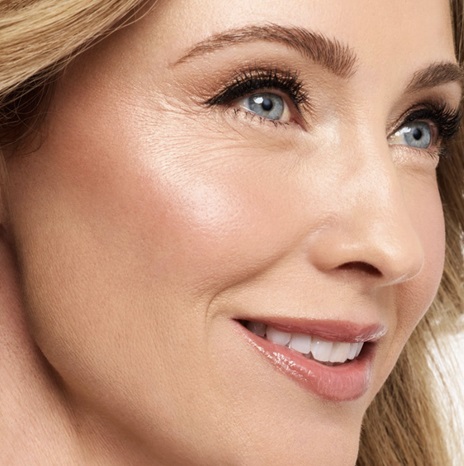If you’ve ever checked your reflection at midday only to see your foundation clinging to dry patches, your concealer cracking, or your glow looking more “blah” than bright, you’re not alone. The good news? These issues often don’t mean your skin is “bad” or beyond repair. Rather, they typically just point to small gaps in your makeup routine. A few thoughtful swaps in products and techniques can completely transform the way your complexion looks and feels, making makeup application smoother and your skin appear healthier.
Not sure where to start? Let’s break down the simple yet effective shifts that can help you bid farewell to flakes and dullness, and hello to a more radiant, comfortable finish.
Start With a Moisture-Locking Base
Your base sets the tone for everything that follows. Even with a good moisturizer, applying makeup on dehydrated skin can cause products to separate or cling in all the wrong places. A hydrating CC cream with SPF delivers breathable coverage while smoothing over dry areas for a flexible, luminous finish that lasts. Built-in sun protection is an added bonus, helping you care for your skin in the long term as you perfect today’s look.
Dermatology research reveals why this matters: the skin’s outermost layer, the stratum corneum, serves as a barrier to retain water. When that barrier is weakened, moisture escapes, leading to visible flaking and roughness. Using a base that replenishes hydration and supports barrier function ensures your makeup sits more smoothly now while keeping your skin feeling more comfortable throughout the day.
Color Correct Before You Conceal
Here’s a common mistake: applying layer after layer of concealer to cover dark circles or discoloration. The more product you pile on, the more likely it is to crack, crease, or highlight dryness. Instead, reach for a lightweight under eye color corrector. By neutralizing unwanted tones first, you’ll need far less concealer on top — just a thin veil that looks natural, feels comfortable, and stays smooth.
Color correctors are available in intuitive shades designed to address common concerns, making the process easier than ever. Additionally, many are formulated with nourishing ingredients that condition the delicate under-eye area, allowing you to brighten while keeping your skin soft, supple, and hydrated. The result is a fresher, wide-awake appearance without the heavy layers.
Avoid Over-Matte Finishes
Matte foundations can be great for oily complexions, but if dryness or dullness is your primary concern, they can backfire. Heavy matte formulas tend to accentuate every bump and flake, leaving skin looking flat rather than fresh.
The alternative? Look for formulas with radiant or natural finishes. Cream-based products, from foundations to blushes, melt seamlessly into skin, delivering that healthy “lit-from-within” effect. Don’t worry — radiant doesn’t mean shiny. The goal is to restore skin’s natural luminosity so it looks hydrated and alive, not greasy.

Set Strategically, Not Heavily Powder has its place, but when your skin is dry, too much of it can make things worse. Over-powdering often creates that chalky, tight look we all want to avoid. A better option is to lock in your makeup with a makeup setting spray.
The right spray creates a flawless skin, look for formulas that go beyond hold to also deliver hydrating skincare benefits — ingredients like ferulic acid and hyaluronic acid help smooth, refresh, and keep your complexion comfortable throughout the day. As proof positive, numerous studies have concluded that HA-based topical products are effective in improving skin hydration, rejuvenation, and overall skin quality.
Technique Matters
Even the best products can fall short if they’re misapplied. The tools you use (and how you use them) make a massive difference in how makeup sits on skin that’s prone to flaking or dullness. Here are a few pro-approved, easy-to-try tips:
● Damp sponges are your best friend for sheer, natural coverage. They help press product into the skin, making it look seamless and not streaky, and can even add a little boost of hydration.
● Soft, fluffy brushes work wonders for blending powders or creams. They gently move the product across the skin without tugging, which helps prevent lifting flakes and creating uneven patches.
● Tapping and stippling motions are key. Instead of rubbing or dragging, which can disrupt your base, build coverage slowly with light layers for a smoother look..
● Less is more. Applying too much product at once can emphasize dryness. Start with a thin layer, then add more only where you really need it.
Minor tweaks like these not only make your makeup look more polished, but they also help your skin feel less stressed, allowing your glow to shine through with minimal effort!

A Fresh Take on Radiance
The difference between dull, flaky makeup and a smooth, dewy finish often comes down to routine, not just skin type or seasonal changes. The products you choose and the way you apply them can completely change how your skin looks and feels.
When your base is hydrated, textures layer more seamlessly, and colors look more vibrant. Cream blush melts in instead of sitting on top, foundation flexes with your skin instead of cracking, and concealer brightens without creasing. Small shifts in technique — such as tapping instead of rubbing or setting with a fine mist instead of heavy powder — keep your look soft, smooth, and alive.
Hydration, light layers, and thoughtful touches add up to something bigger: makeup that feels effortless and confidence that feels lasting.